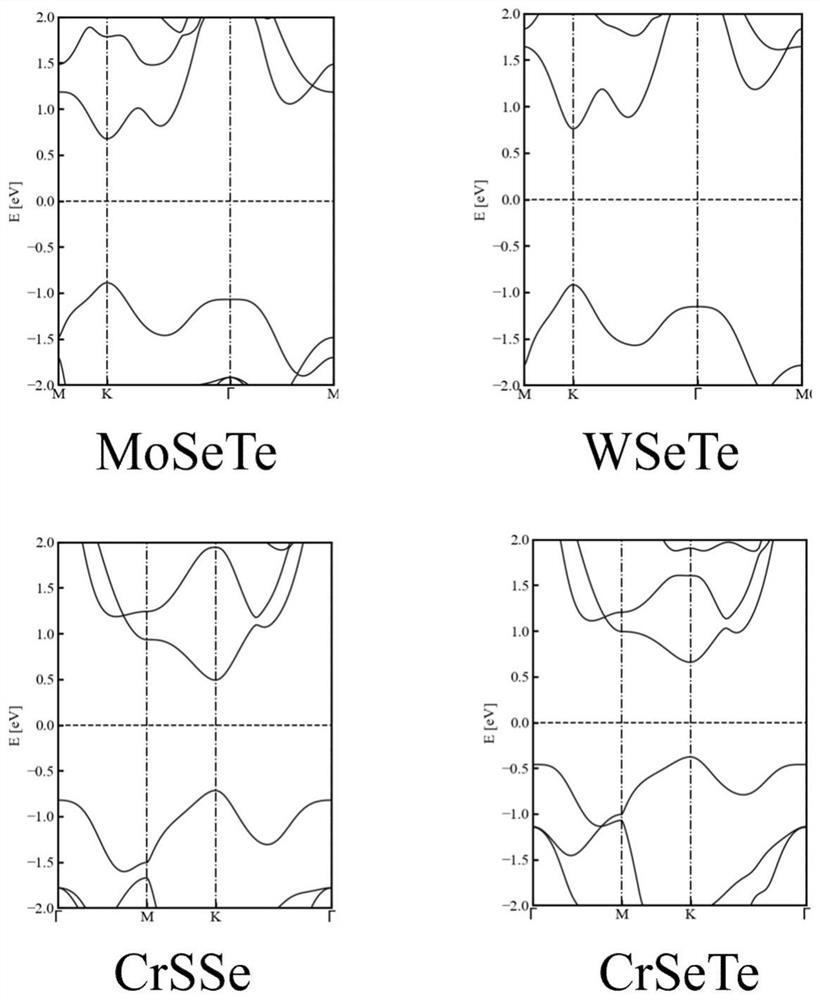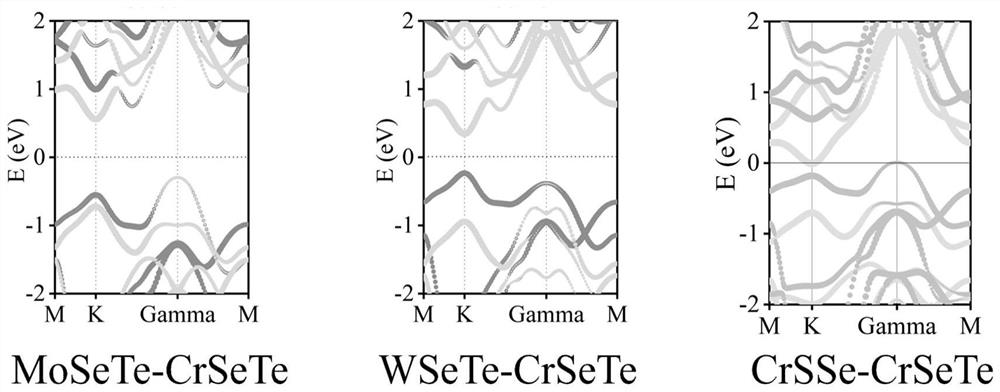Design method of Z-type heterojunction catalyst for high-efficiency photocatalytic decomposition of water
A heterojunction and photocatalytic technology, applied in the field of photocatalysis, can solve the problems of limiting photocatalytic conversion efficiency, unreachable catalytic efficiency, and inability to effectively separate photogenerated carriers due to symmetry, so as to improve photocatalytic efficiency Effect
- Summary
- Abstract
- Description
- Claims
- Application Information
AI Technical Summary
Problems solved by technology
Method used
Image
Examples
Embodiment 1
[0023] (1) Using the Materials studio software, import the block structures of the four materials MoSeTe, WSeTe, CrSSe, and CrSeTe in 2D Janus TMDCs, cut the four materials, and cut out the (001) surface, and in Vienna Ab-initio The Simulation Package (VASP) software uses the PBE functional to optimize the structure, and calculates the work function and energy band, and extracts the bottom of the conduction band (CBM), the top of the valence band (VBM) and the vacuum energy level in the energy band, such as figure 1 and shown in Table 1.
[0024] (2) Use the Build Layer function of the Materials studio software to construct six heterojunctions: MoSeTe-WSeTe, MoSeTe-CrSSe, MoSeTe-CrSeTe, WSeTe-CrSSe, WSeTe-CrSeTe, CrSSe-CrSeTe. In this example, MoSeTe-CrSeTe, WSeTe-CrSeTe, CrSSe-CrSeTe three heterojunctions, such as figure 2 shown in VASP, and adopt the DFT method of PBE+DFT-D3 in VASP to optimize the structure; use VASP to calculate the energy bands of three kinds of heteroj...
PUM
 Login to View More
Login to View More Abstract
Description
Claims
Application Information
 Login to View More
Login to View More - R&D Engineer
- R&D Manager
- IP Professional
- Industry Leading Data Capabilities
- Powerful AI technology
- Patent DNA Extraction
Browse by: Latest US Patents, China's latest patents, Technical Efficacy Thesaurus, Application Domain, Technology Topic, Popular Technical Reports.
© 2024 PatSnap. All rights reserved.Legal|Privacy policy|Modern Slavery Act Transparency Statement|Sitemap|About US| Contact US: help@patsnap.com










